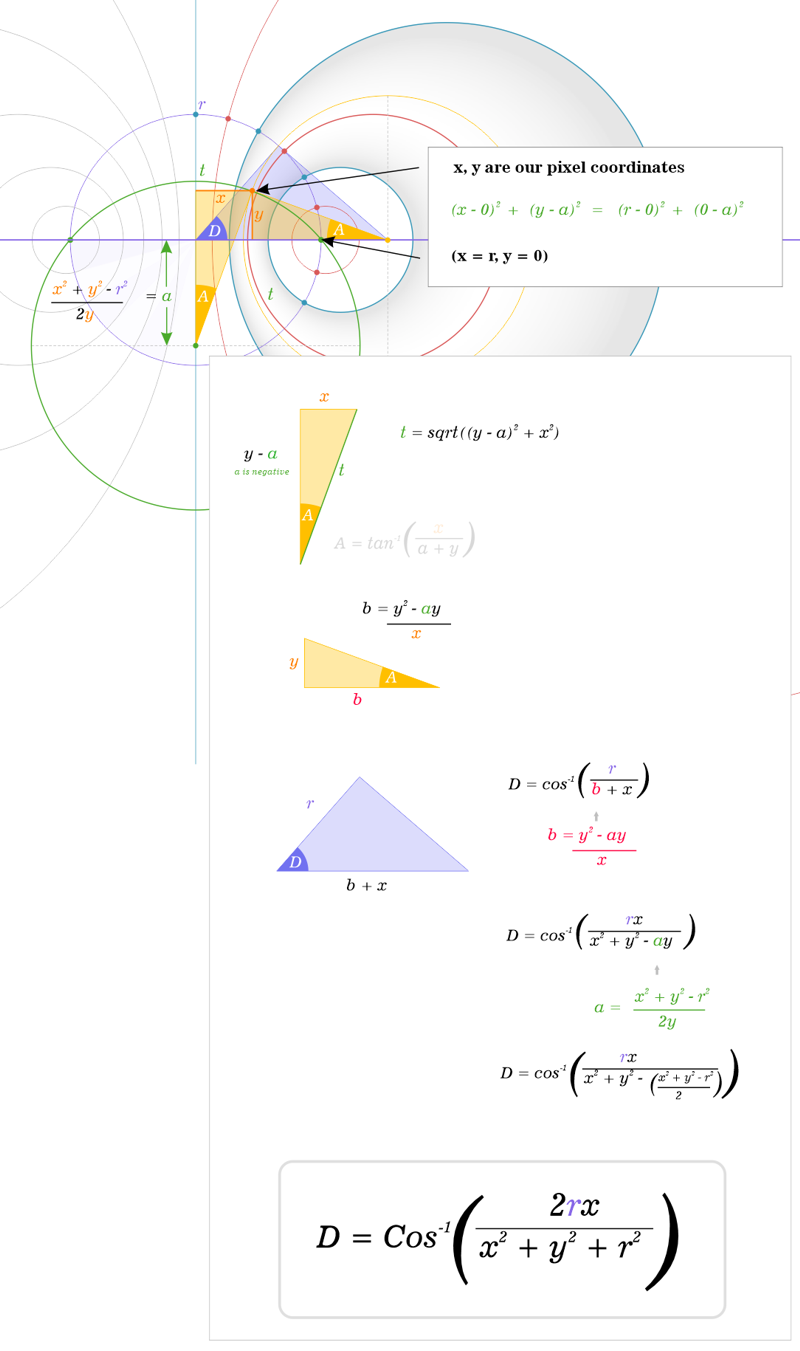1. Construction method of protofield primitive
The wave configuration below I call a Protofiled. This primitive building block forms the basis of most of the generative art and animation I have produced over the last few years. It is fundamentally very simple, yet by rotating, combining and varying the frequencies of different protofield primitives we can produce a surprisingly rich set of visuals. I only discuss the fundamentals of the algorithm below and don't get into color or animation methods.
